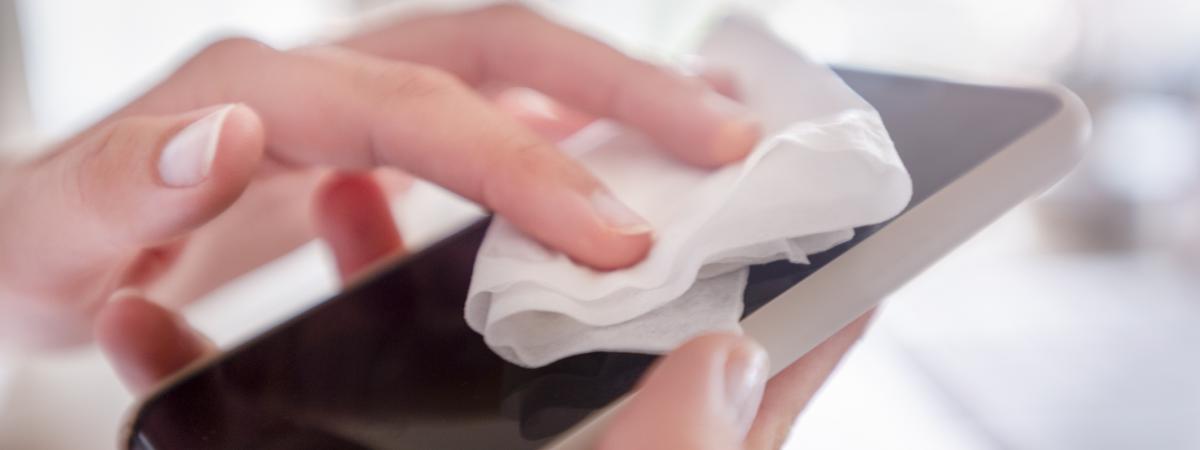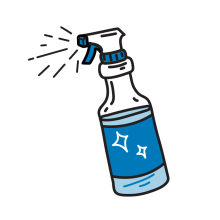
The alarmingly dirty life of everyday objects
Shanina Knighton is rethinking how we stay healthy—one phone, kitchen and bathroom at a time
The next time you raise your cellphone to your ear, consider this: That surface pressed to your face may be dirtier than a toilet seat.
Cellphones are just one example of commonly used objects that harbor germs and have been studied by microbiologists. From the bottoms of purses to the handles of doors and tops of soap dispensers, germs are lurking in places and quantities that could make you or your family sick.
What to do? Case Western Reserve University’s Shanina Knighton, PhD, RN (GRS ’17, nursing), has plenty of answers. An adjunct associate professor at Frances Payne Bolton School of Nursing with a board certification in infection control, Knighton is a regularly quoted expert in local, national and international publications, lending insights on everything from food contamination to hygiene in airplane bathrooms.

It wasn’t the path Knighton intended when she came to campus for her PhD. But CWRU gave her both “space to ask bold questions,” such as why [hospital] patient hand hygiene is so often overlooked,” she said, “and the resources to pursue answers that could actually change practice.” CWRU also believed in her work—and that helped spur her shift from being a bedside nurse to a national voice on infection prevention and hygiene.
Knighton’s approach is practical and stems from lessons she learned as a hospital nurse, including during the H1N1 and COVID-19 pandemics. While nursing staff had the skills to keep patients safe, Knighton saw patients who could benefit from better hygienic habits.
Fortunately, Knighton says the best cleaning agents may already be in your home: vinegar and hydrogen peroxide.
Fast Facts
Legionella, E. Coli and Mold—Oh my!
Your home may be full of unseen germs and bacteria. Here’s Shanina Knighton’s advice.
1. Dish rags and sponges
They are some of the dirtiest items in kitchens and harbor more than food particles. Lingering moisture provides the perfect growth environment for E. coli, salmonella, mold and yeast. Regularly sanitize these items with white vinegar, soaking them for at least 10 minutes. They should be replaced as often as monthly.
2. Cutting boards and knives
If not cleaned properly, cutting boards and knives used to prepare raw meat can harbor salmonella. In addition, foods from fruit to mushrooms can release spores and prompt mold to grow. Thoroughly clean surfaces and utensils either with vinegar—which is acidic enough to break down grime—or another cleaning agent.

3. Coffee makers
They are known to trap moisture without ever fully drying. This can lead bacteria and mold to grow. Run white vinegar through a cycle in the machine each month to eliminate germs. For more regular maintenance, rinse all components between uses and let them dry.
4. Water/ice machine on a fridge door
Ice machines, sink spouts and drains have standing water and are prime settings for germs and bacteria, such as legionella and pseudomonas, to grow. Use bleach or vinegar weekly to disinfect commonly used water sources.
5. Showers—heads, curtains and tile
The discoloration on your shower head, shower curtain and bathroom tile is visible fungus and mold. Tie a plastic bag of vinegar around the shower head for 10 minutes each month to break down any growth and prevent water-borne pathogens. Regularly disinfect the curtain and grout with vinegar or hydrogen peroxide.
6. Cellphones and smart watches
Wherever you go, your phone likely goes too. Clean your phone and smart watch at least once a week, but never spray them directly with a cleanser. Use a lightly dampened microfiber cloth sprayed with 70-90% alcohol. And clean the phone case too.
7. Toilet-cleaning brush and holder
Sanitize the brush to stop fecal material, mold and mildew from thriving. Soak it and the base in vinegar or hydrogen peroxide and let them dry.
Illustrations by Rinee Shah (top); Maaike Canne (bottom)

